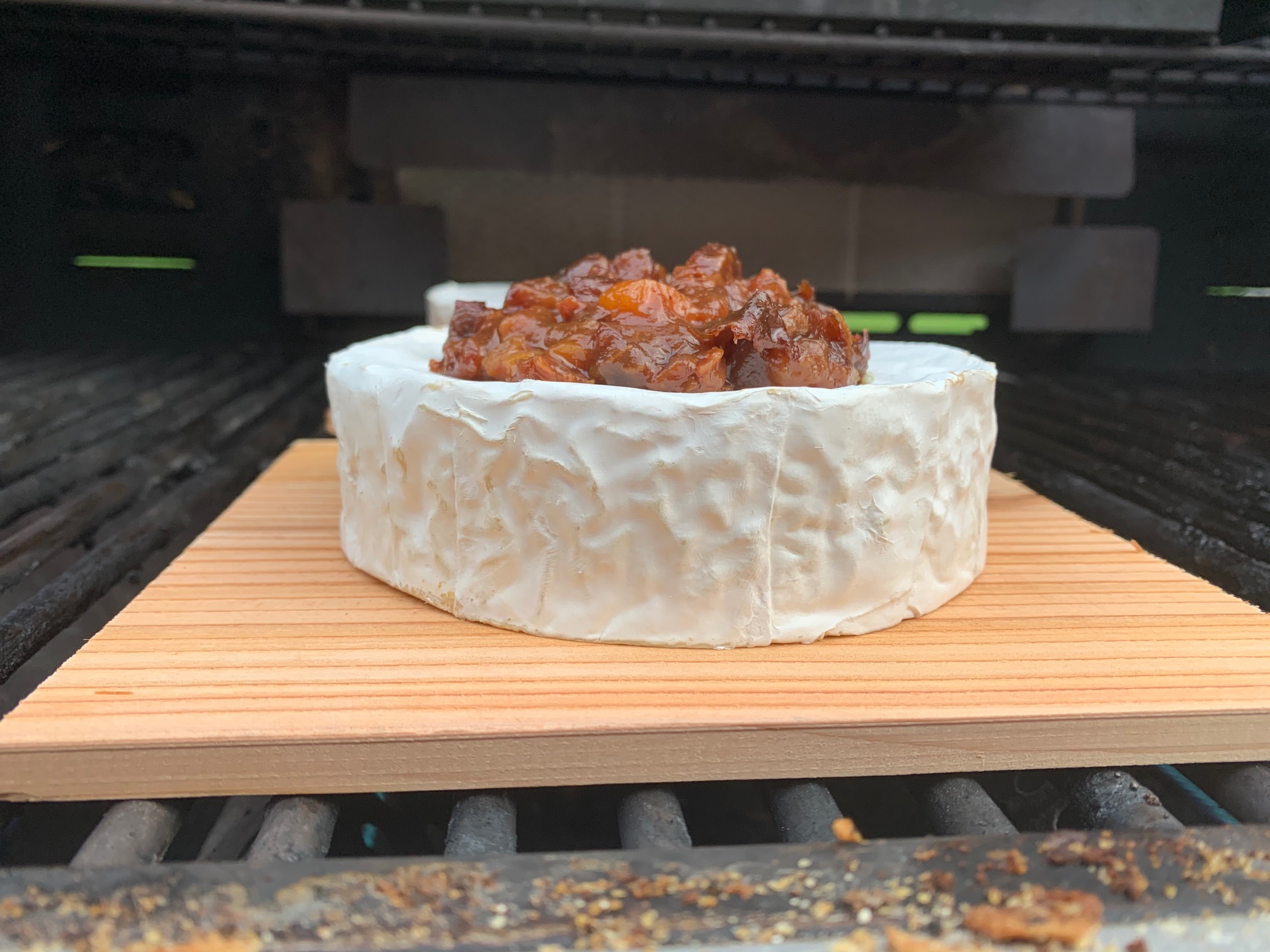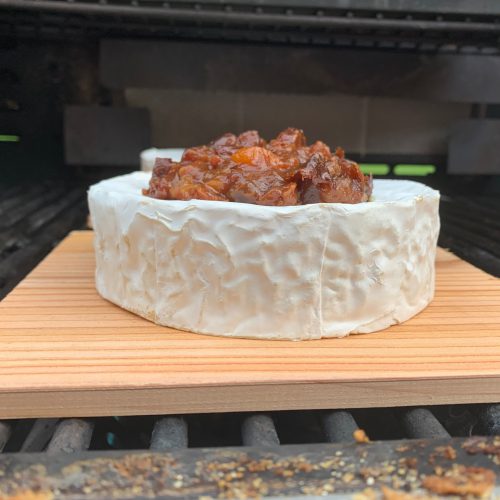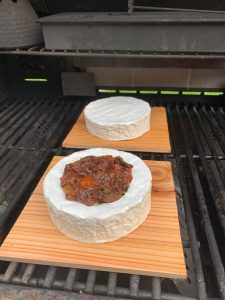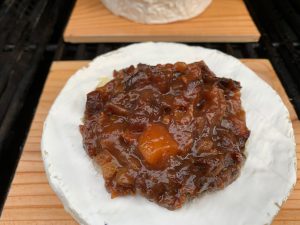19 August, 2020
Cedar-Planked Camembert


Cedar-Planked Grilled Camembert with Fruit Chutney
This is another cedar-planked recipe my family loves. Plank grilling, also known as planking, is a fragrant and delicious taste sensation through the smoky-savory flavor cedar infuses into the grilled food product.
Equipment
- Gas or Charcoal Grill
- Cedar Plank(s)
Ingredients
- 1 8 oz Camembert (Brie) If you can get a 13 oz cheese, go for it!
- Fruit Chutney
- 1 French Baguette or Crackers
Instructions
- Purchase a Camembert (Brie) in your local grocery store.Pre-heat your grill, medium indirect heat, about 350°F.Rub cedar plank(s) with olive oil to prevent the cheese from sticking to the wood.Slice the top off the brie, about half an inch in, from the rim with a sharp knife.Using a teaspoon, scrape out cheese, making an indentation for the fruit chutney/relish.Do not cut/peel the rind off the cheese! The rind is edible and provides stability, once the cheese is soft and edible. Place Camenbert (Brie) on cedar blank and grill at 350 degrees for 20 minutes, or until soft to the touch.Do't overcook, as the cheese wall will eventually rapture and cheese will leak out onto cedar blank and drip into your grill.For a nice table presentation, transfer the cedar plank to a center platter, cut and serve from cedar board.Leftovers can be refrigerated in an airtight container for up to one week days.
Notes


 HISTORY:
HISTORY:Camembert is a moist, soft, creamy, surface-ripened cow’s milk cheese. It was first made in the late 18th century at Camembert, Normandy, in northern France. It is similar to Brie, which is native to the Brie region of France.
Brie is milder, with a buttery, creamy flavor, while Camembert can be more intense in flavor, with deeper earthy notes. Cream is added to brie, giving it a higher milk fat percentage and creamier texture than Camembert. Brie has 60 percent milk fat, while Camembert has 45 percent. Both cheeses have an earthy flavor and aroma (slightly similar to mushrooms), but Brie is more buttery, while Camembert has a more nutty flavor. ABOUT THE PROCESS:
As the Camembert (Brie) heats up, moisture rises out of the soaked plank and pulls the characteristic flavors of Cedar with it. This essentially infuses the cheese with a fresh wood flavor and allows the cheese to gently melt, as the plank acts as a barrier between it and the flames in your grill. ABOUT CEDAR PLANKS:
- Purchase grilling planks at your local grocery store, your local hardware or home-improvement store. Consider online options as well!
- Long cedar blanks are more economical and will accommodate a whole slap of salmon. If you are only grilling for 1 or 2 people, consider cutting the board in two pieces.
- Western Red Cedar is the most common planking wood. Make sure it is not treated cedar!
- Soak your cedar planks in water, for at least one hour (three or four is better).
- Weigh down the plank with a heavy pot or bowl as it soaks, so it’s completely immersed.
- If you don’t have a large enough container to soak your cedar plank(s) in water, consider buying an aluminum foil baking tray, available in your local grocery store, for around $ 4.00. You can reuse the baking tray many times!
- This helps prevent the wood from catching on fire while you cook.
- Watch for occasional flare-ups. Keep a water spray bottle handy.
- The soaked plank also helps to keep the food moist while it’s cooking.
- Try soaking the plank in an inexpensive white wine (instead of water) for an interesting flavor variation.
I would not recommend reusing cedar planks for two main reasons.
- The bottom (and often times sides) are charred and the plank will take on the flavor of whatever you grilled on it.
- Likely, the essential oils from the wood will be used up from the first round of grilling.
